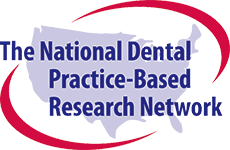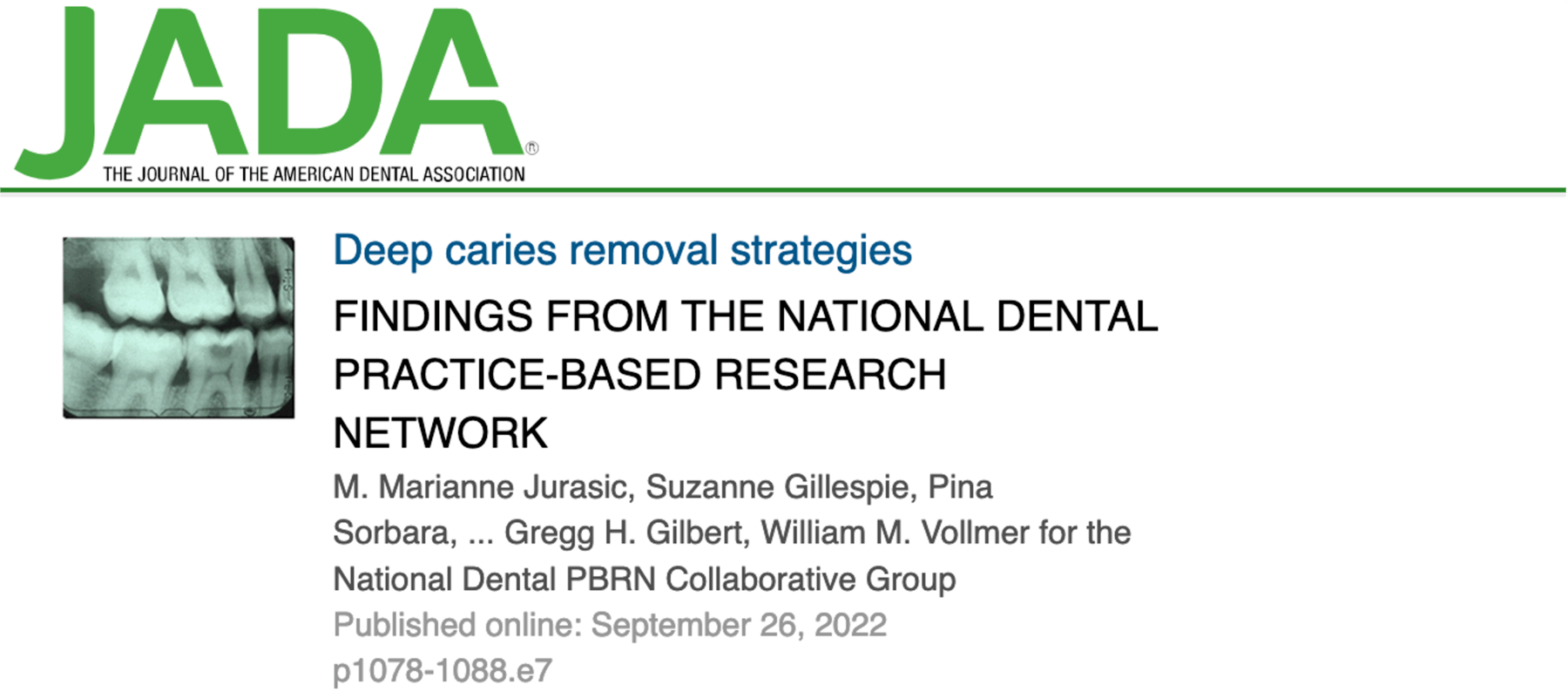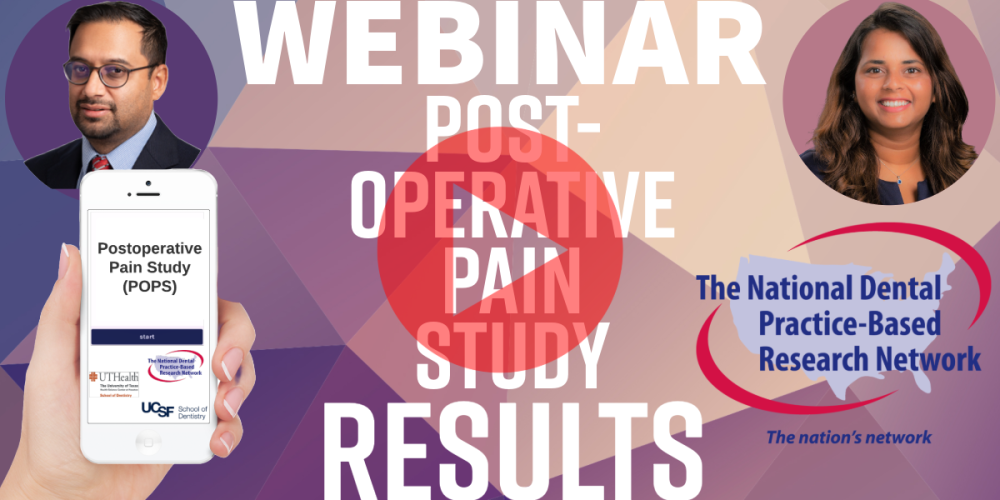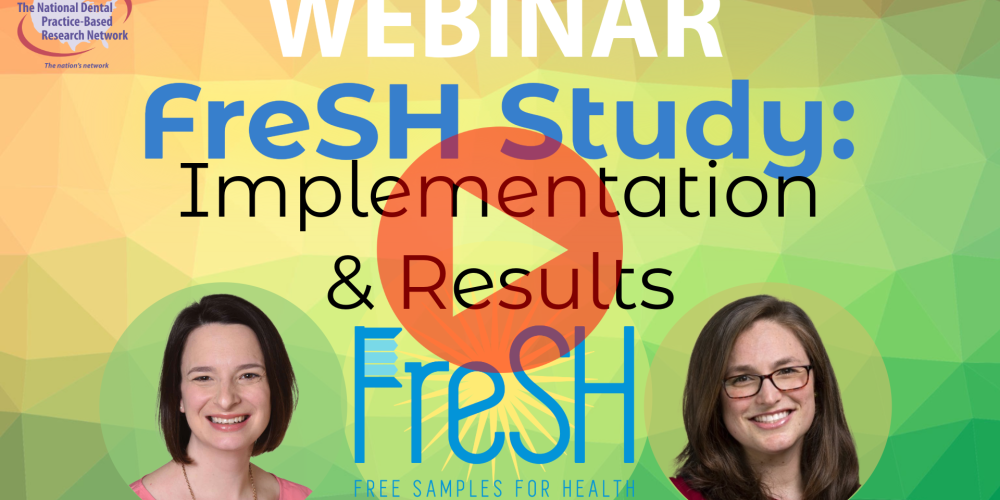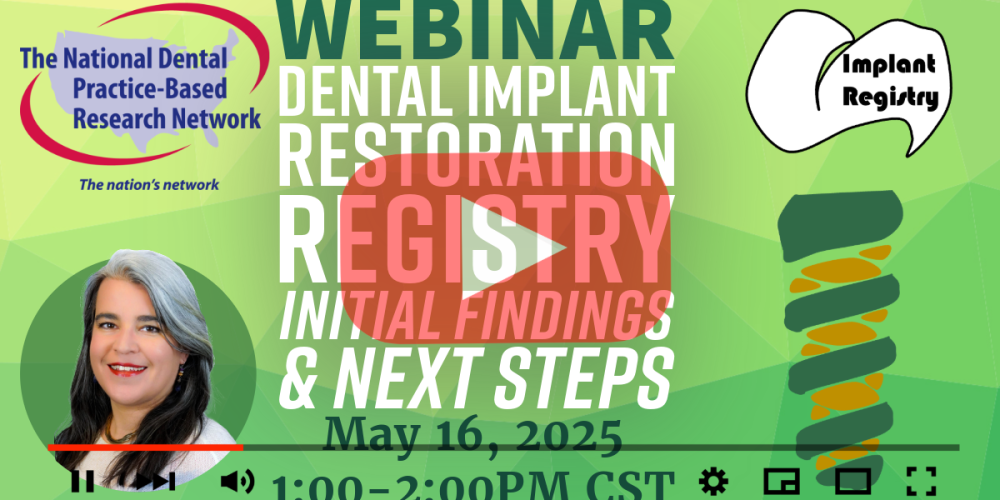Network dentists use selective caries removal for deep carious lesions
To preserve hard tissue and avoid pulp damage, dentists can selectively remove tissue from deep carious lesions. The network queried the member dentists who provide restorative treatment to learn more about their management strategies for deep carious lesions in posterior permanent teeth in adults. The results from this cross-sectional study was recently published in JADA, and we interviewed Dr. M. Marianne Jurasic, the study principal investigator, for our blog. Dr. Jurasic is a Clinical Professor of General Dentistry and Health Policy and Health Services Research at the Boston University Henry M. Goldman School of Dental Medicine. She also serves as the Director of the Center for Clinical Research at the same institution.
WHAT IS THIS STUDY ABOUT?
Recently published recommendations by the International Caries Consensus Collaboration regarding carious tissue removal include treating cavitated carious lesions in a manner that preserves hard tissue and retains teeth long term. The recommended priorities include preserving healthy and remineralizable tissue, achieving good restorative seal, maintaining pulpal health, and maximizing restoration success. Tooth preparations for shallow lesions should provide a cavity that can support the final restoration, while in deeper lesions, the priority is to maintain pulpal health. Translated to clinical practice, this means that teeth with shallow or moderately deep cavitated carious lesions should have the carious tissue removed according to selective removal to firm dentin, whereas in deep cavitated lesions, selective removal to soft dentin is preferred, with more carious tissue retained selectively over the pulp. Furthermore, according to a 2021 systematic review conducted by the Cochrane Collaboration, selective carious tissue removal in permanent teeth demonstrated lower odds of treatment failure (restoration failure, endodontic complications, extractions) than conventional complete (non-selective) caries removal to hard dentin.
We conducted a cross-sectional questionnaire study to examine Network dentists’ use of selective caries removal when treating deep carious lesions in posterior permanent teeth in adults.

WHY DID YOU CONDUCT THIS STUDY?
As a clinician, teacher and researcher, my interest has been in the prevention and treatment of caries, in particular in high caries risk adults. Treating teeth with deep carious lesions with a more conservative approach such as selective caries removal has the potential to extend the longevity of the tooth and affect a patient’s oral health and quality of life. I therefore wanted to know to what extent this more conservative approach to caries management has been adopted by Network dentists.
WHO PARTICIPATED AND WHEN?
During the spring of 2021, Network dentists enrolled at the limited or full participation level who provide non-implant restorative dentistry occasionally or routinely were invited to participate in the cross-sectional questionnaire study.
The dentists were presented with two clinical case scenarios consisting of an asymptomatic tooth and symptomatic tooth with mild reversible pulpitis. In both scenarios, a posterior permanent tooth had deep occlusal and/or proximal caries that appeared to extend to the inner 1/3 of dentin and without an obvious potential pulpal exposure. Dentists were asked to report what percentage of time they would treat such teeth according to three treatment options: 1 – remove all caries at the periphery of the cavity; remove as much caries as possible pulpally and stop before the pulp is exposed; 2 – remove all caries and proceed with a direct pulp cap if the pulp is exposed; 3- remove all caries and proceed with endodontic-related procedures if the pulp is exposed. The questionnaire required that these percentages added to 100. Dentists were also asked to rate the importance of various patient or treatment factors when making a clinical decision regarding deep caries removal strategies. We created statistical models to assess provider concordance with the International Caries Consensus Collaboration guidelines for the two clinical case scenarios using the same threshold level. We defined concordance with guidelines to be choosing option 1 at least 50% of the time because we felt this to be a reasonable minimum threshold for characterizing someone as guideline concordant.
WHAT ARE THE MAIN FINDINGS OF THE STUDY?
We had a very high response rate by Network practitioners (72%). Of the 467 dentists included in the final analysis, 46% treated 7 or more adult patients per month with deep carious lesions. Sixty percent of dentists were in private practice, while 20% practiced in public health practice or community health centers.
- Dentists reported that 54% of the time they would choose selective caries removal (i.e., Option 1 – remove all caries at the periphery of the cavity; remove as much caries as possible pulpally and stop before the pulp is exposed) if the tooth was asymptomatic.
- Dentists reported that 44% of the time they would choose selective caries removal if the tooth was symptomatic (mild reversible pulpitis).
- The state of a patient’s oral health, including anticipated compliance with future appointments, was the most highly rated factor when making a clinical decision regarding deep caries removal strategies.
- Providers in public health practice, compared to those in private practice, were more likely to be guideline concordant for both asymptomatic and symptomatic teeth.
- More recent graduates from dental school (2009-2020) were more likely to be guideline concordant for asymptomatic teeth.
WHAT DID YOU LEARN FROM THIS STUDY, AND WHAT IS NEXT?
This study showed that Network dentists are using selective caries removal strategies when managing deep carious lesions more often than previously reported in US and Japanese practice-based research network studies. However, despite the evidence that supports selective caries removal to soft or firm dentin overlying the pulp, not all dentists are following the International Caries Consensus Collaboration recommendations. Our next step will be to understand what helps or hinders dentists to adopt selective caries removal when indicated clinically, and why they do this for some patients, but not others. We also want to test interventions for helping dentists implement evidence-based clinical recommendations into their practices.
WHERE CAN I FIND MORE INFORMATION ABOUT THE STUDY?
Additional information about the study is provided on the Network website, and it contains the study protocol, the questionnaire, and our publications.
The study publication is: Jurasic MM, Gillespie S, Sorbara P, Clarkson J, Ramsay C, Nyongesa D, McEdward D, Gilbert GH, Vollmer WM, for the National Dental PBRN Collaborative Group. Deep caries removal strategies: Findings from the National Dental Practice-Based Research Network. JADA 2022:153(11):1078-1088. DOI: 10.1016/j.adaj.2022.08.005
If you are interested in participating, contact us!
The study is funded by the National Institutes of Health / NIDCR grants U19-DE-28717, U01-DE-28757 and U01-DE-028727.
